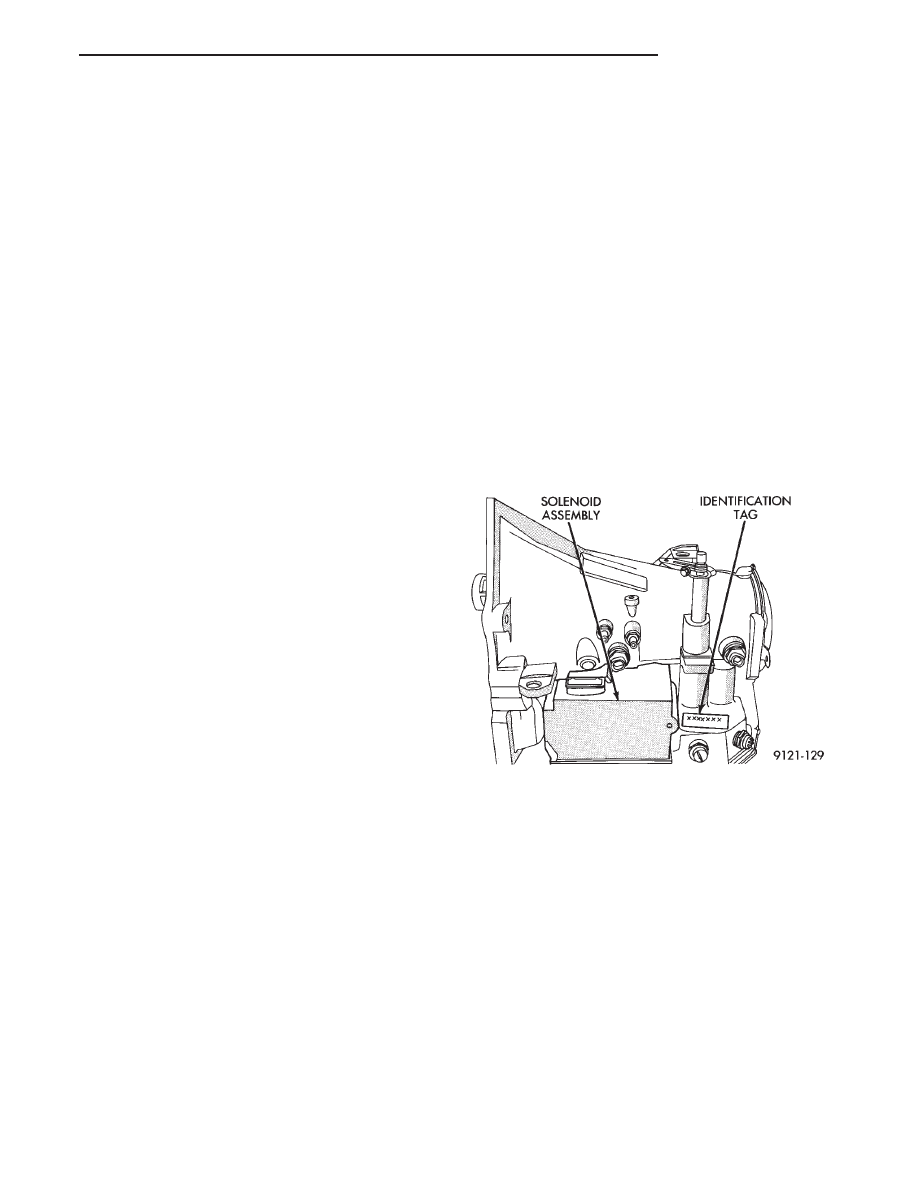Chrysler Le Baron, Dodge Dynasty, Plymouth Acclaim. Manual - part 120

41TE FOUR SPEED AUTOMATIC TRANSAXLE
INDEX
page
page
41TE Transaxle General Diagnosis
. . . . . . . . . . . 88
Aluminum Thread Repair
. . . . . . . . . . . . . . . . . . . 98
Bearing Adjustment Procedure
. . . . . . . . . . . . . . 141
Clutch Air Pressure Tests
. . . . . . . . . . . . . . . . . . 95
Coolers and Tubes Reverse Flushing
. . . . . . . . . 98
Diagnosis Chart ‘‘B’’ . . . . . . . . . . . . . . . . . . . . . . . 90
Diagnosis Trouble Code Chart ‘‘A’’ . . . . . . . . . . . . 89
Differential Repair
. . . . . . . . . . . . . . . . . . . . . . . 136
Fluid and Filter Changes
. . . . . . . . . . . . . . . . . . . 93
Fluid Drain and Refill
. . . . . . . . . . . . . . . . . . . . . 93
Fluid Leakage-Torque Converter Housing Area
. . 97
Fluid Level and Condition
. . . . . . . . . . . . . . . . . . 93
Gearshift Linkage Adjustment
. . . . . . . . . . . . . . . 98
General Information
. . . . . . . . . . . . . . . . . . . . . . . 85
Hydraulic Pressure Tests
. . . . . . . . . . . . . . . . . . . 94
Input Clutches-Recondition
. . . . . . . . . . . . . . . . 121
Oil Cooler Flow Check
. . . . . . . . . . . . . . . . . . . . 99
Oil Pump Seal Replace
. . . . . . . . . . . . . . . . . . . 136
Park/Neutral Position Switch
. . . . . . . . . . . . . . . 102
Pinion Factor Procedure
. . . . . . . . . . . . . . . . . . 104
Road Test
. . . . . . . . . . . . . . . . . . . . . . . . . . . . . . 93
Selection of Lubricant
. . . . . . . . . . . . . . . . . . . . . 93
Solenoid Assembly-Replace
. . . . . . . . . . . . . . . . 101
Special Additives
. . . . . . . . . . . . . . . . . . . . . . . . . 93
Speed Sensor-Input
. . . . . . . . . . . . . . . . . . . . . . 102
Speed Sensor-Output
. . . . . . . . . . . . . . . . . . . . 103
Torque Converter Clutch Break-In Procedure
. . . 104
Transaxle Quick Learn Procedure
. . . . . . . . . . . 103
Transaxle Recondition
. . . . . . . . . . . . . . . . . . . . 105
Transaxle Removal and Installation
. . . . . . . . . . . 99
Transmission Control Module
. . . . . . . . . . . . . . . 103
Transmission Range Switch
. . . . . . . . . . . . . . . . 102
Valve Body-Recondition
. . . . . . . . . . . . . . . . . . . 132
GENERAL INFORMATION
The 41TE four-speed FWD transaxle uses fully-
adaptive controls. Adaptive controls are those which
perform their functions based on real-time feedback
sensor information. The transaxle uses hydraulically
applied clutches to shift a planetary gear train.
TRANSAXLE IDENTIFICATION
The 41TE transaxle identification code is printed
on a label. The label is located on the transaxle case
next to the solenoid assembly (Fig. 1).
Refer to Figure 2 for an internal view of the tran-
saxle assembly.
Fig. 1 Identification Tag Location
Ä
TRANSAXLE
21 - 85